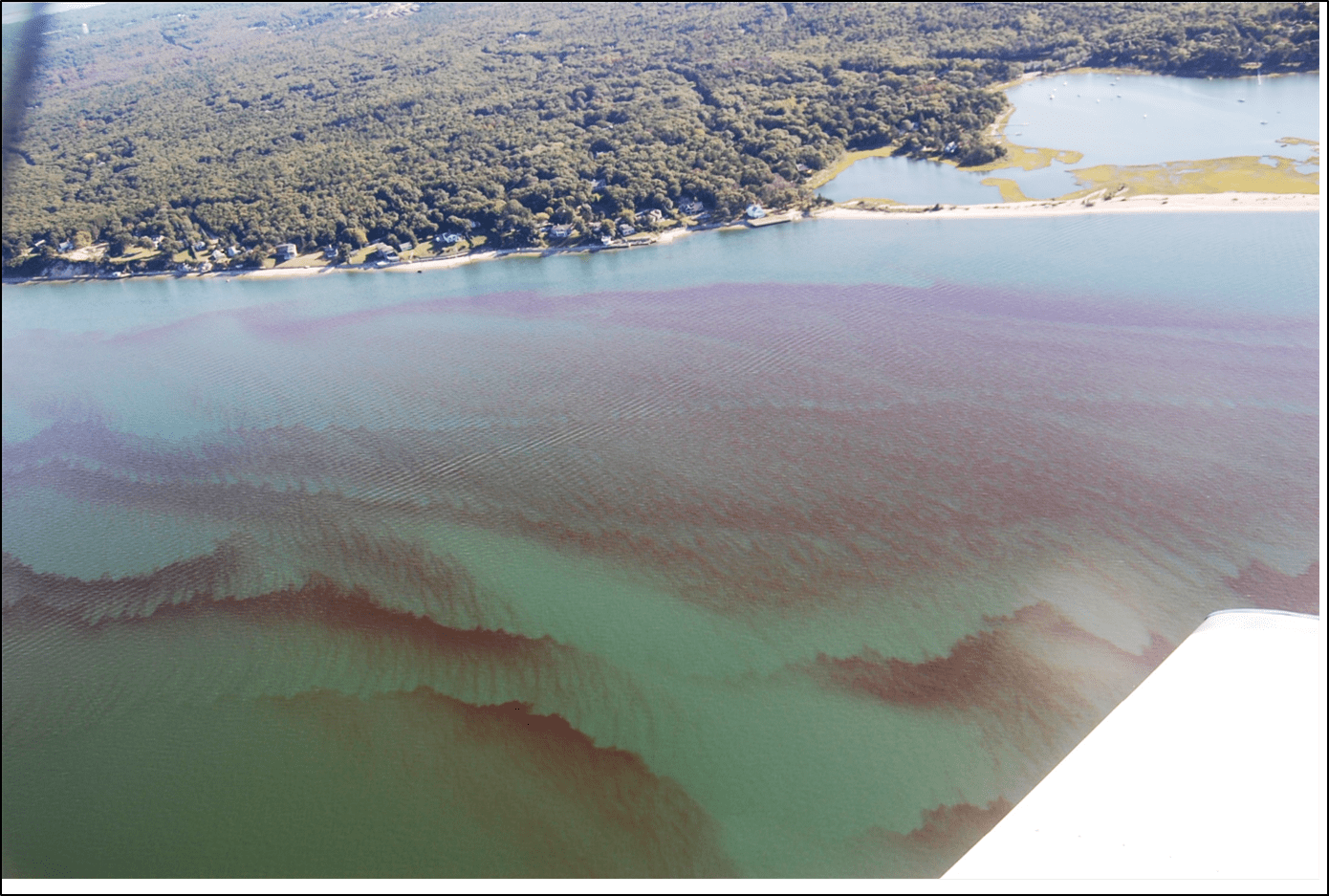This project aims to determine how harmful algal blooms (HABs) in New York waters respond to coastal acidification, how current and future climate change conditions will affect these HABs, and how the co-occurrence of these HABs with acidification will impact economically and ecologically important fish and shellfish. The project team will identify stressor “hot spots” with co-occurring HABs and acidification that can directly impact shellfish resources and determine fish and shellfish that are most and least vulnerable to HABs and acidification to inform practical decisions on aquaculture site locations and cultivated species.

Why We Care
Harmful algal blooms (HABs) and coastal acidification adversely impact commercially important shellfish and early life stage forage fish. These environmental stressors and their effects have been studied individually, but their interactive effects on marine organisms are poorly understood. The combined effects of HABs and acidification may pose complex physiological challenges for aquatic organisms. Larval shellfish and fish may be particularly vulnerable given that the seasonal onset of coastal acidification and the emergence of many HABs overlap with the period when larval marine shellfish and fish are spawned in the temperate estuaries of the mid-Atlantic and northeast US coasts. Understanding and predicting where, when, and to what extent HABs and acidification co-occur, and the effects these multiple stressors have on key species, can inform decisions related to shellfish aquaculture and fisheries resource management.
What We Are Doing
A combination of field observations, field experiments, and lab experiments will inform comprehensive vulnerability and risk assessments for HABs and acidification at the ecosystem and organism level. The project team will use continuous monitoring devices, vertical and surface water mapping, and discrete sampling to determine the seasonal progression of acidification, hypoxia, and HABs in New York coastal waters. Field studies and laboratory culture experiments informed by field observations will quantify the growth and toxicity of HAB species under varying acidification (pH and pCO2) conditions.
This project aims to
- Quantify the seasonal progression of coastal acidification, hypoxia, and three harmful algal bloom species (Alexandrium catenella, Dinophysis acuminata, and Margalefidinium polykrikoides);
- Quantify the effects of coastal acidification on the growth and toxicity of these HABs in lab and field experiments; and
- Quantify the lethal and sublethal effects of these HABs coupled with acidification and other stressors on early life stages of three bivalve molluscan shellfish species indigenous to the entire US east coast (Eastern oyster Crassostrea virginica, Hard clam Mercenaria mercenaria, and Bay scallop Argopecten irradians) and two forage fish (Inland silverside Menidia beryllina and Sheepshead minnow Cyprinodon variegatus).
The project will establish time series of environmental data and phytoplankton community composition at the following fixed field station sites: (1) Northport Harbor and (2) Cold Spring Harbor, NY, prone to annual blooms of A. catenella and D. acuminata, and (3) Shinnecock Bay and (4) the western Peconic Estuary, which experience annual blooms of M. polykrikoides. The effects and co-effects of HABs and acidification at levels currently observed in New York coastal waters and approximating future conditions under climate change will be determined for multiple life stages of these commercially important shellfish and early life stage forage fish. The exploration of multiple HAB species will indicate which of these species are most affected by acidification conditions and whether the effects are synergistic. Studies to evaluate the lethal and sub-lethal effects of HABs and acidification on benthic and pelagic fish will reveal the potential for broader ecosystem and food web effects.
Impact/Benefits of our Work
This assessment of the prevalence, intensity, and effects of HABs and acidification in New York coastal waters will identify stressor “hot spots” with co-occurring HABs and acidification that can directly impact shellfish resources. The project will identify fish and shellfish that are most and least vulnerable to HABs and acidification, informing practical decisions on aquaculture site locations and cultivated species. Ecosystem and fisheries managers will have access to information on potential ecosystem vulnerabilities from the effects of HABs and acidification on the fish species evaluated in this study. Additionally, project outputs will inform mitigation strategies to prevent or control the negative impacts of HABs and acidification. The project’s ultimate output will be maps of HAB and acidification “hot spots” that overlap resource maps with monitoring assets. This product will have immediate value for the shellfish aquaculture community and coastal resource managers on the East Coast.
Dr. Christopher Gobler of Stony Brook University leads this project. Co-investigators are Dr. Ryan Wallace of Adelphi University and Dr. Konstantine Rountos of St. Joseph’s University.
The project is funded through the NCCOS Competitive Research Program, in partnership with NOAA’s Ocean Acidification Program.
